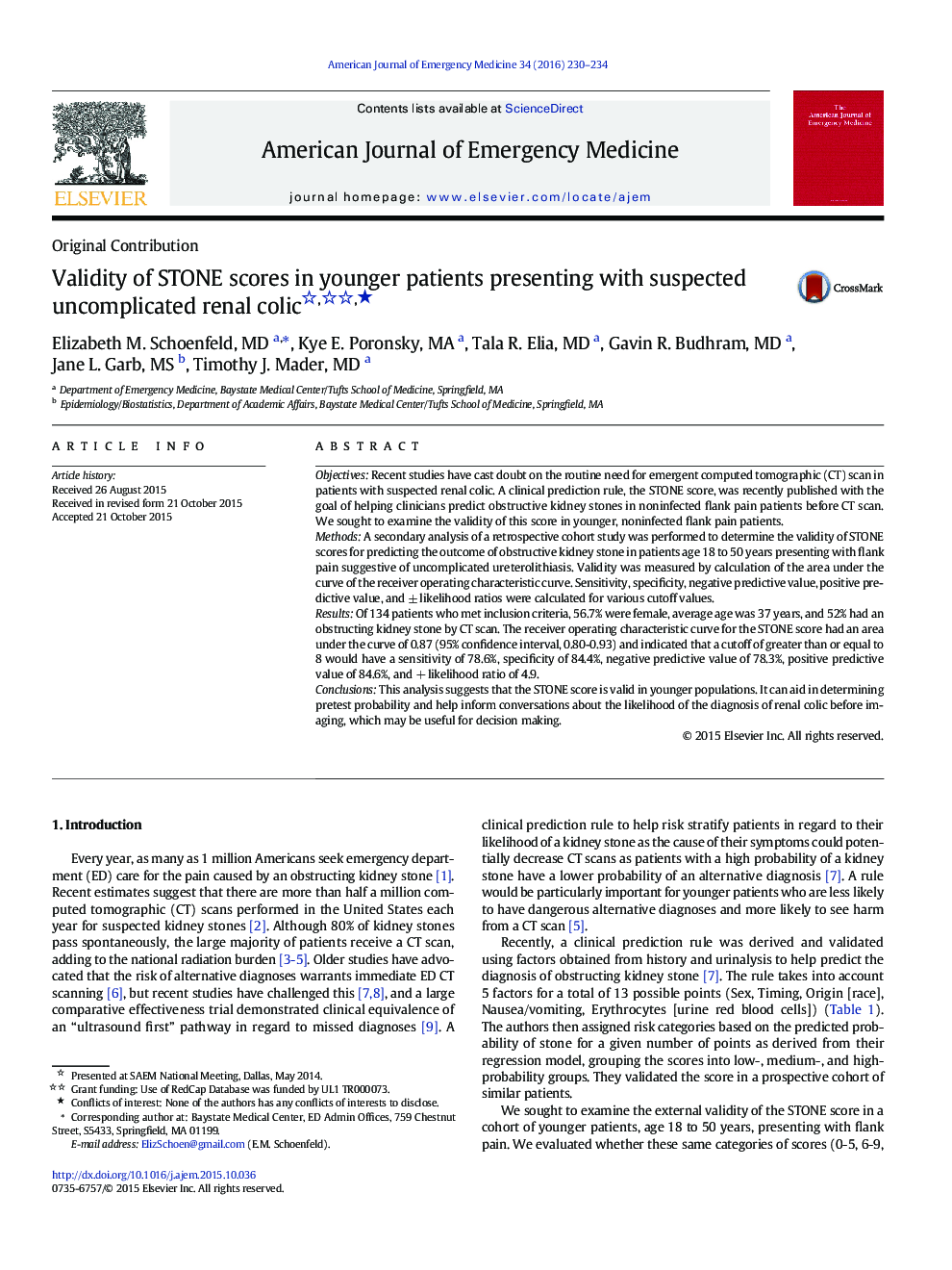| Article ID | Journal | Published Year | Pages | File Type |
|---|---|---|---|---|
| 3223215 | The American Journal of Emergency Medicine | 2016 | 5 Pages |
ObjectivesRecent studies have cast doubt on the routine need for emergent computed tomographic (CT) scan in patients with suspected renal colic. A clinical prediction rule, the STONE score, was recently published with the goal of helping clinicians predict obstructive kidney stones in noninfected flank pain patients before CT scan. We sought to examine the validity of this score in younger, noninfected flank pain patients.MethodsA secondary analysis of a retrospective cohort study was performed to determine the validity of STONE scores for predicting the outcome of obstructive kidney stone in patients age 18 to 50 years presenting with flank pain suggestive of uncomplicated ureterolithiasis. Validity was measured by calculation of the area under the curve of the receiver operating characteristic curve. Sensitivity, specificity, negative predictive value, positive predictive value, and ± likelihood ratios were calculated for various cutoff values.ResultsOf 134 patients who met inclusion criteria, 56.7% were female, average age was 37 years, and 52% had an obstructing kidney stone by CT scan. The receiver operating characteristic curve for the STONE score had an area under the curve of 0.87 (95% confidence interval, 0.80-0.93) and indicated that a cutoff of greater than or equal to 8 would have a sensitivity of 78.6%, specificity of 84.4%, negative predictive value of 78.3%, positive predictive value of 84.6%, and + likelihood ratio of 4.9.ConclusionsThis analysis suggests that the STONE score is valid in younger populations. It can aid in determining pretest probability and help inform conversations about the likelihood of the diagnosis of renal colic before imaging, which may be useful for decision making.
